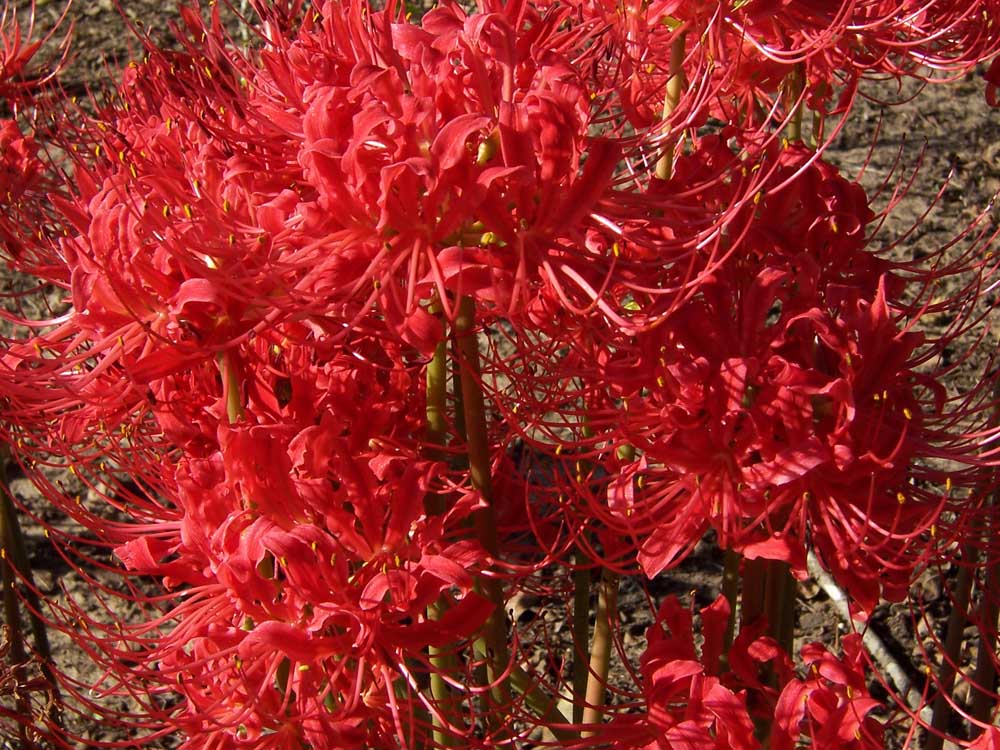Beautiful Lycoris radiata is a flower of many names
Published 5:30 am Thursday, September 20, 2018

- Lycoris radiata shows its color. (Courtesy)
Lycoris radiata is the botanical name of the widely loved, fall-blooming, red spider lily. Though the Latin name is pretty and not that hard to say, the blooming bulb is better known by many other names. Examples of common names include magic lily, hurricane lily, surprise lily, naked lady and schoolhouse lily.
The beautiful scarlet flower is originally from China, Korea and Nepal, but the version we see today is one cultivated in Japan. It arrived on the island when the first inhabitants brought it as a companion plant to rice from the mainland. It is still found planted on mounds bordering rice fields to discourage mice and burrowing rodents from eating the crops. The bulb-forming plants are from the Amaryllis family and have the mild toxicity of other plants in that group. As a result, they are avoided by most animals.
Trending
There is a large volume of Japanese folklore inspired by these flowers. There they are associated with spirits, death and funerals. They are widely used in that culture to decorate graves as a sign of affection and respect. The lore and tradition surrounding plants have a variety of reasons for coming into being, but in this case many have to do with the interesting nature of the plant itself. First, the bulbs are poisonous. Second, the bloom is vibrant vermillion, a color associated with blood and death all over the world. Then there is the odd growth habit they have to spring up after summer droughts in a violent profusion of color, en masse and very quickly, inviting surprise and awe. And lastly, they traditionally bloom in the fall around the time of the Japanese festivals that honor the dead and the ancestor spirits. The Japanese name, other shore flower, refers to the fact that they represent the realm of the spirit world on the “other shore” of existence.
An American sea captain trading goods in Japan was so struck by the beauty of these flowers that he brought a few bulbs back to the United States in 1854. He gave them to his niece who was a devoted gardener. She did not have much faith they would survive as they were dried out from the long voyage, but she planted them anyway. Two years later when they came up and bloomed, she was delighted, as were many people who saw them in her garden and wanted some of their own. Soon the spritely red beauty was showing up in gardens all over the expanding United States, where it has become widely naturalized. Every section of the country gave the cheerful flower its own local name. In the Northeast it is often called school house lily as it blooms around the time school begins. In the Deep South it is sometimes known as naked ladies. The blooms appear before the foliage, so the flowers are perched on slender stalks unadorned and unabashed in their beauty. Along the Southern coast they are called hurricane lilies because they bloom after heavy storm-brought rains following the drier hot summers. In the West and Central U.S. they are called magic and surprise lily because the flower springs up seemingly overnight at a time when not much else is blooming after fall rains begin. Here in East Texas it is commonly called red spider lily. The whiskery stamens curling back toward the center of the flower look a bit like the pose of a dead spider. The first part of the Latin name comes from the Greek word for twilight. Lycoris is the name of a minor goddess who presides over the evening hours in Greek mythology. Radiata, refers to the shape of the bloom and the fact the sepals and stamens of the flower form a shape similar to the spokes radiating from the central hub of a wheel. The twilight association may be a nod to the fact that the curling circular flowers are especially stunning in the early part of the evening when the gray gloaming’s ultra violet light makes their scarlet hue almost pulsate.
The plants are sterile and are propagated by bulb division. For the best show of blooms, allow your clumps to grow thickly for several seasons. Once they achieve a nice masse of blooms, divide them every few years in the spring after the leaves die back. At that time you can begin new clumps around your garden or be generous to your friends and family with extras. The plants are long lived and largely insect- and disease-resistant. Deer and burrowing rodents avoid them. The flowers are stunningly gorgeous, lightly fragrant and bloom for several weeks. With so many positive traits, by whatever name you call Lycoris radiata, it will be a wonderful addition to your garden.
Lycoris radiata, along with many flowering bulbs that are successful in the South will be available at the Smith County Master Gardeners From Bulbs to Blooms conference and sale on Oct. 13 at Harvey Convention Center in Tyler. For more information, see the Smith County Master Gardener Facebook page or go to https://txmg.org/smith/coming-events.






